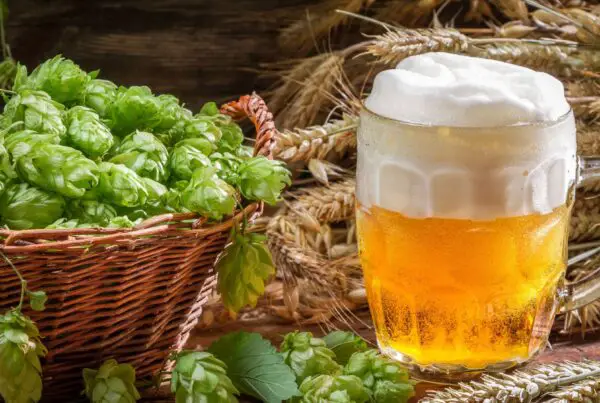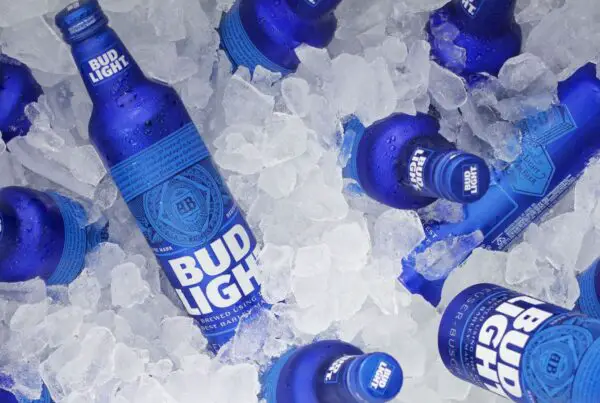What is Kolsch Beer? (Kölsch)
Hailing from the ancient city of Cologne (Köln) in Germany, Kölsch is a beer style that’s as rich in history as it is in flavor.
You’ve probably encountered it at some point on a beer menu or while scanning the taps at your local bar. It’s the kind of German beer that might pique your curiosity, prompting questions like:
- First off, how the heck do you pronounce Kölsch?
- What is Kölsch?
- What sets Kölsch apart from other styles of beer?
Pour yourself a small, narrow glass (don’t worry, we’ll explain), sit back, and allow us to ferment some expert beer knowledge in your mind.
The Basics of Kölsch
How to Pronounce Kölsch
Seeing the word Kölsch can be as confusing as your first trip to a biergärten, or your first time hearing a Björk lyric. Just trying to figure out how to approach its pronunciation might seem a bit tricky if you’re not familiar with Germanic phonetics.
Surprisingly, pronouncing it is actually pretty straightforward: Think of that “ö” as the “u” in “fur”. So, it’s basically pronounced “kurlsch” with a soft “r” sound, almost like “kulsh.”
Also to clear up any haze, the term Kölsch refers to two things:
- The Beer Style: A delicate, top-fermented, light-colored beer that showcases a balance of fruity ale characteristics and clean lager-like crispness—the one we’re concerned with here.
- The Language (Well, the dialect): It’s the word used for the dialect spoken in Cologne—a tidbit to keep in mind for the next pub trivia night.
The Kölsch Konvention
In 1986, 24 local breweries in and around the city of Cologne established the Kölsch Konvention, a commitment to preserve the uniqueness of Kölsch.
According to the Konvention, for beer labels to display the word Kölsch, the beverage inside must be:
- Brewed within the city of Cologne
- A top-fermented ale
- Clear and pale in color
- Have a gravity between 11 to 14 degrees Plato (specific gravity of 1.044 to 1.056)
Kölsch vs Lager
Kölsch is not a lager, despite some similar characteristics. The essential difference is the fermentation: Kölsch is a top-fermented beer, making it an ale, compared to lager which is bottom-fermented.
Profile of Kölsch-Style Beer
Key Flavors
Kölsch brings a beautiful symphony of subtle, sophisticated, and refreshing flavors to the palate:
- Malt – Often the first to greet your taste buds, providing a light, bready flavor
- Fruit – Subtle notes of apple, pear or even white grape
- Hop – Enough to provide balance, but not overly bitter
Appearance
Kölsch is a pale, clear brew, with a bright, straw-yellow hue. Its presentation when served is a key part of the experience, highlighting its clarity and carbonation.
An expert pour of Kölsch will reveal a tall, fluffy white foam head that dissipates slowly, leaving behind a Belgian-style lace.
Stange Brew: Why is Kolsch Served in that Weird Glass?
Ever wonder why Kölsch is served in a narrow, cylindrical glass that looks and feels more like a weird, stemless champagne flute than a pint glass? That’s a stange: the traditional beer glass for serving Kölsch.
An authentic stange glass holds approximately 200 ml or just under 7 oz of beer, ensuring its temperature stays consistent—i.e. nice and cold—from the first sip to the last. It’s not because a stange is thick or well-insulated; it’s because it holds so little beer that you’ll most likely finish all of it before it has a chance to warm up.
The “problem” with these O.G. stange glasses is that if you’re in a busy bar, your servers/bartenders don’t want to be running back and forth, constantly refilling everyone’s tiny Kölsch glasses. Fortunately, there are now larger stange glasses that hold about double the Kölsch (12 – 13 oz).
Tip: If you don’t have a stange glass to serve Kolsch in, a pilsner glass makes a good replacement.
How is Kölsch Brewed?
Brewing a Kölsch is a process carefully honed over the centuries in the age-old breweries of Cologne, Germany. It owes its character to a blend of high-quality ingredients and meticulous brewing methods:
Ingredients
- Malted Barley – Usually Pilsner malt, the base of Kölsch’s delicate flavor
- Hops – German noble hop varieties like Hallertau and Tettnang are popular choices for their light bitterness and aroma
- Yeast – A specific Kölsch yeast strain is used to ensure the right balance between ale and lager characteristics
- Water – Cologne’s soft water helps to highlight the subtle flavors
The Brewing Process
- The malts are mashed to extract sugars.
- The mash is then boiled with hops added for bitterness.
- After cooling, the wort is transferred to a fermenter, where yeast is added.
- Post-fermentation, the beer is lagered at cold temperatures for several weeks, which gives Kölsch ale its more lager-like characteristics.
Conclusion
Kölsch is the product of centuries of German brewing know-how, born from a unique brewing process that takes the best bits from ales and lagers and smashes them together.
In other words, if you want a beer that’s got the best of both worlds, Kölsch is it
So next time you spot that umlaut (ö) on a beer menu, be the bold beer connoisseur we both know you are, and order it. No gimmicks, no weird ingredients, no fuss—just good beer.
Cheers to that, or as the Kölsche say: Prost!






